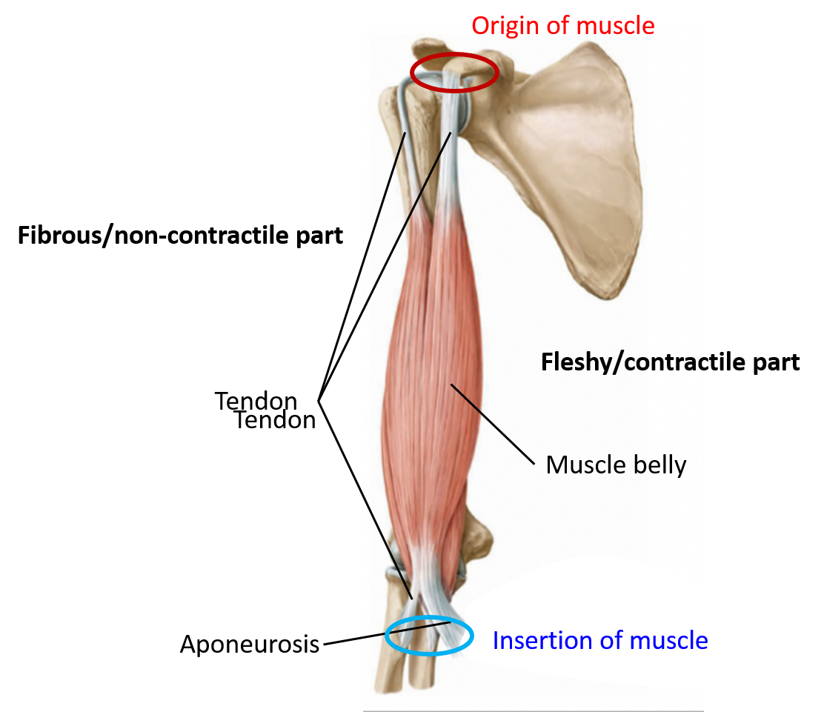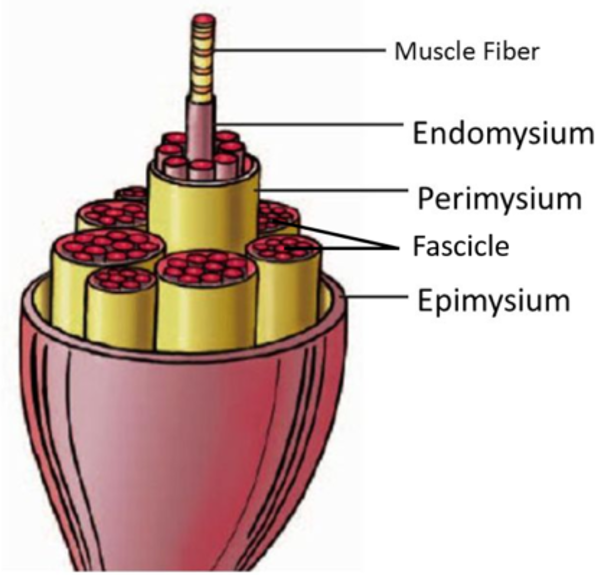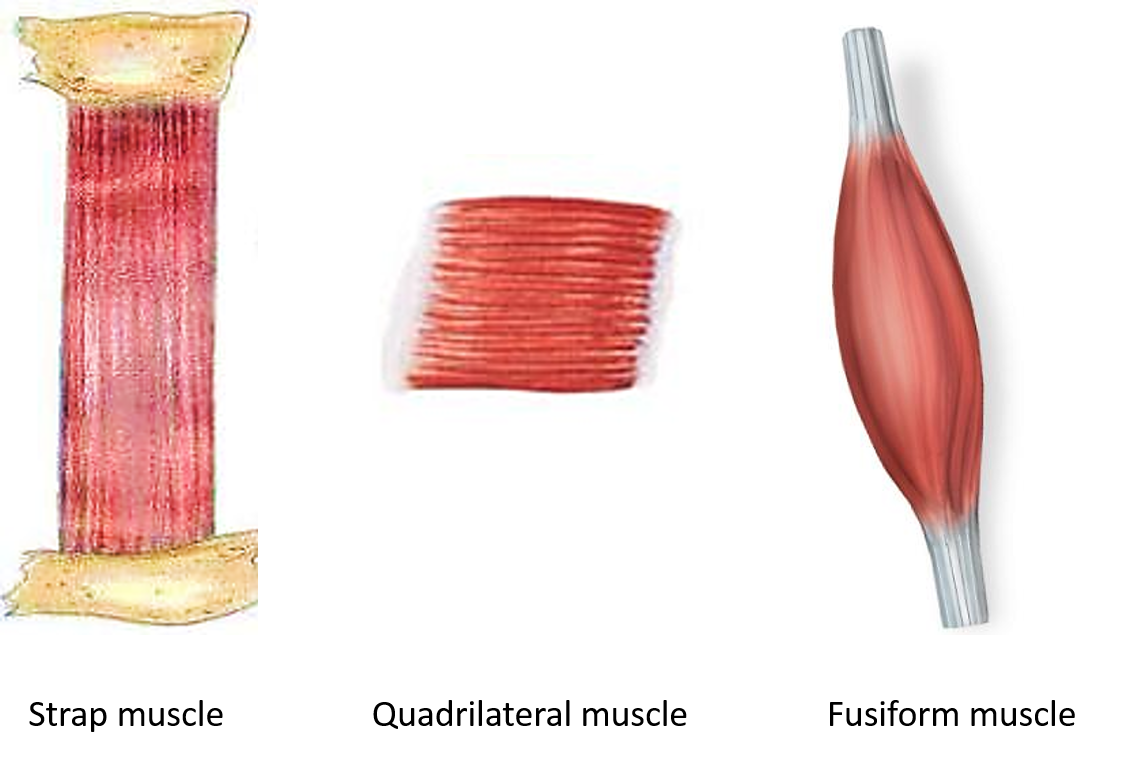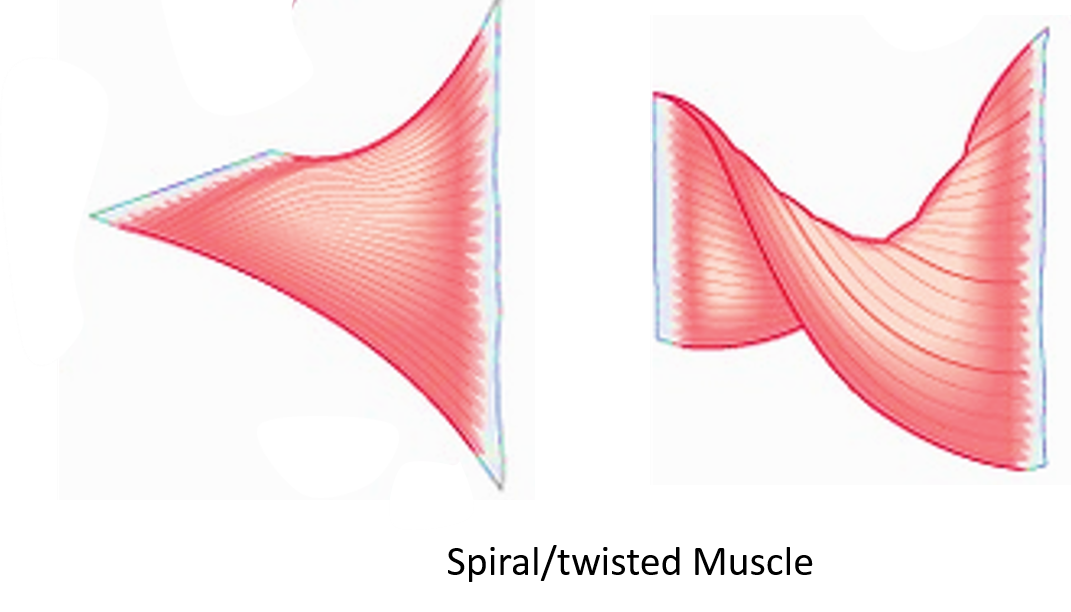What are the parts of Skeletal Muscle?
Skeletal muscle consists of two parts:
• Fleshy part – is the contractile part called as muscle belly.
• Fibrous part – is the non-contractile part. When it is cord-like, it is called tendon and when it is flattened, it is called aponeurosis.
Origin and Insertion of Skeletal:
- Origin: is that end of the muscle which remains fixed during its contraction
- Insertion: is that end which moves during contraction. Usually in limbs, the origin of muscles is usually proximal to insertion

However, origin and insertion, are at times interchangeable.
Describe the connective tissue layers covering skeletal muscle?
Each skeletal muscle is made of hundreds or thousands of muscle fibers/muscle cells which are arranged in fascicles (bundles of muscle fibers).
Muscular tissue has three concentrically arranged layers of connective tissue.The three layers of connective tissue from within outside are:
• Endomysium: each individual muscle fiber is surrounded by connective tissue layer called endomysium.
• Perimysium: each bundle of muscle fiber (fasciculus) is surrounded by a layer of connective tissue called the perimysium.
• Epimysium: the whole muscle is surrounded by a connective tissue sheath called epimysium.

The connective tissue layers support and protect the muscle fibers and provide pathway for the passage of blood vessels and nerves to the muscle fibers
Classify skeletal muscles according to the Fascicular Arrangement.
Skeletal muscle is made up of fascicles (bundles of muscle fibers). The arrangement of fascicles vary, resulting in muscles with different shapes and functional capabilities.
Classification of skeletal muscle according to the arrangement of muscle fibers/fascicular arrangement is:
1. Parallel fasciculi: When muscle fibers are parallel to the line of pull. The range of movement is more, but the force of contraction is less.
Following are the types of muscles with parallel fasciculi:
- Strap like– e.g. Sartorius, sternohyoid, sternothyroid.
- Quadrilateral – e.g. Pronator quadrates, quadrates lumborum.
- Fusiform – e.g. Biceps brachii, digastric.

2. Oblique fasciculi: When muscle fibers are arranged obliquely to the line of pull. The range of movement is less, but the force of contraction is more. Following are the types of muscles with parallel fasciculi:
- Unipennate – all muscle fibers are arranged obliquely on one side of the tendon e.g. Flexor pollicis longus, peroneus tertius.
- Bipennate – muscle fibers are arranged obliquely on both the sides of centrally placed tendon. e.g. Flexor hallucis longus, rectus femoris and dorsal interossei.
- Multipennate – a series of bipennate muscles e.g. deltoid, subscapularis
- Circumpennate – muscle fibers converge into the central tendon from all sides e.g. tibialis anterior.

3. Convergent fasciculi: muscle fibers converge near the point of insertion (temporalis).
4. Circular fasciculi: the fibers surround a circular orifice/opening such as mouth (orbicularis oris).

5. Spiral/twisted fasciculi: muscle fibers are twisted in arrangement close to their insertion. e.g. pectoralis major and latissimus dorsi.

6. Cruciate fasciculi: mucle fibers are arranged in superficial and deep planes and cross each other (sternocleidomastoid).

